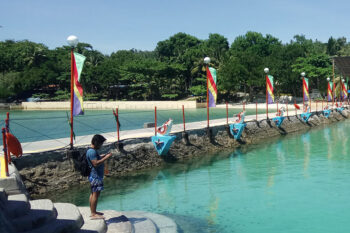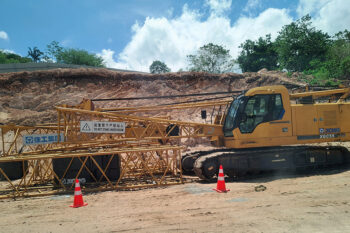
MALAYBALAY CITY (MindaNews / 28 June) — Two ancestral domains in Barangay Dalwangan, Malaybalay City — Bukidnon-Daraghuyan and Bukidnon-Baleteon — not only lie adjacent to each other. Like many other Lumads or indigenous peoples of Mindanao, their inhabitants share similar histories of dispossession and neglect. Yet, by drawing strength from their culture they have managed to assert their primordial rights to the land of their ancestors.
Daraghuyan came from the word “daraghuy,” or the wailing of a spirit while telling the agonies of life on earth. Legend says the spirit became a baylan (shaman), a human being.

Baleteon got its name from balete, a tree that thrived in the area. Believing them to be havens of different spirits, the early inhabitants performed rituals before the gigantic trees and concocted medicines from their bark. But the trees had disappeared due to wanton cutting.
Cattle over people
Decades ago, the Bukidnon-Daraghuyan tribe used to settle in sitio Sanggaya, Dalwangan. But a rancher who had connections in government claimed the area as his own, and demolished the huts of the hapless Lumads, forcing the latter to move deeper into their territory, in sitio Inhandig. As Bae Inatlawan, their shaman-leader, recounted, “With tears in our eyes, we packed our things and left. We were wondering why cattle had become more important than people.”
In Inhandig, which lies at the foot of Mount Kitanglad Range Natural Park, the tribe tried to live off the land that forms part of the protected area. They later came in contact with the park management as well as with the Kitanglad Integrated NGOs (KIN). They became part of the “social fence,” that is, as community-based forest protection volunteers in exchange for socioeconomic assistance facilitated by KIN under a project funded by the Global Environment Facility.
The partnership between the tribe and KIN went beyond the term of the project, which ended in 2002. Three years after, in 2005, the tribe filed a Certificate of Ancestral Domain Title (CADT) application with the National Commission on Indigenous Peoples (NCIP). KIN assisted by sourcing funds for the costly application process which entailed tracing the claimants’ genealogy, documenting history and cultural practices, boundary survey and delineation, several meetings and consultations with various stakeholders, among others.
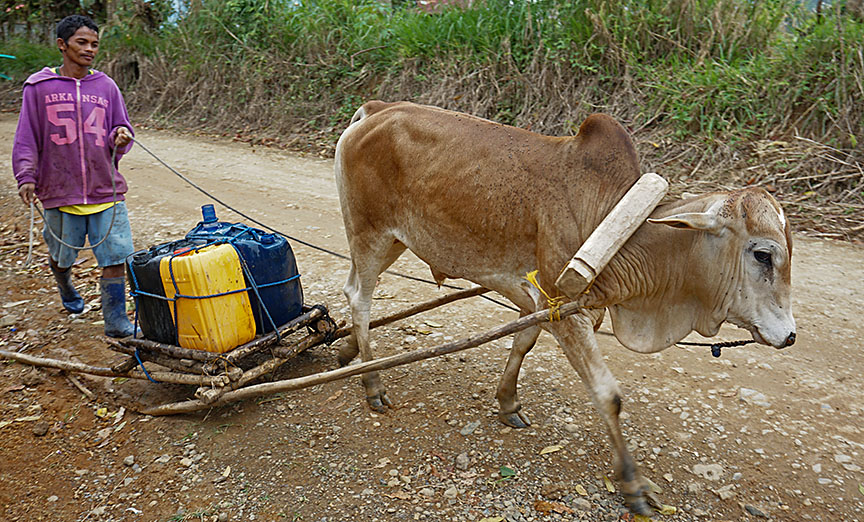
Concurrent with the processing of their claim, the tribe started drawing up their Ancestral Domain Sustainable Development and Protection Plan (ADSDPP), albeit in broad strokes yet. For people to whom the concept of technical planning was rather alien, the eagerness as shown in their long wish list was to be expected. It was a beautifully rough roadmap of where they wanted to go.
And, it wasn’t just the elders. The children and youth chimed in with their own inputs too. In one such planning session where Bae Inatlawan asked what vegetables they would like to plant, all of them responded that it seemed like listening to the classic “Bahay Kubo”.
All that may sound simplistic, but it revealed that foremost in their minds is survival, food security to be exact. They also saw the need to educate themselves “aron dili na mabentahaan” (to avoid being taken advantage of). However, most households could only send their children to elementary. Going to high school and college means more expenses (transportation, board and lodging, etc.).An opportunity came after KIN staffer Grace Ganache and Dutch volunteer Emma van Opstal initiated a fundraising for educational assistance. At least 30 students availed of the assistance. Many didn’t get to finish, although some did manage to reach college and obtain degrees. Nonetheless, the plan for children and youth to get formal education remains in the plan along with the desire to impart indigenous knowledge and practices through a learning system suited to their cultural values.
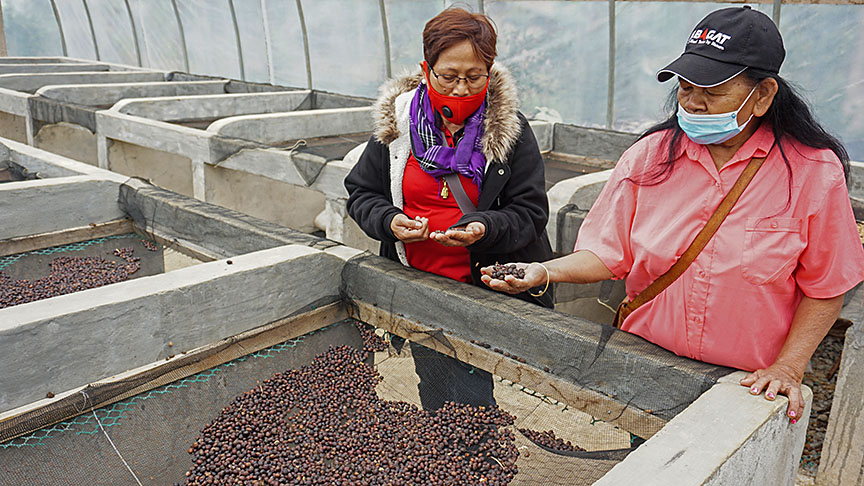
In addition, the tribe has embarked on enterprise-level activities such as coffee production and processing with help from government agencies. They have also obtained P20 million from the National Housing Authority for a 100-unit housing program in Olanguhon village, where their World Bank-funded heritage center stands. Construction, however, is yet to start more than a year after NHA released the budget to the Malaybalay City local government.
Forced to leave
Like their neighbors in Daraghuyan, the claimants of Baleteon had also experienced being displaced from their ancestral territory. The Department of Agriculture-Region 10 had insisted that the area belonged to the Malaybalay Stock Farm by virtue of Proclamation 637 issued on November 23, 1933. In 1954, the DA fenced the area and let loose several cattle, destroying the crops planted by the inhabitants. Then in 2005, all dwellings in Baleteon were demolished after the Regional Trial Court in Malaybalay granted DA’s request to eject the claimants.But the NCIP debunked DA’s claim and upheld the CADT application, citing historical accounts, the claimants’ “intimate relation to the land” and time-immemorial possession of it, and government documents such as birth certificates, tax declarations, and maps.“The claimants and their ancestors may have been displaced from their ancestral domain as a consequence of this government program/project, but it does not and cannot disqualify them from acquiring formal recognition of their right over their ancestral domain. They did not leave their domain but were forced to leave therefrom. IPRA expressly includes within its ambit the ICCs/IPs who have been displaced from their domain as in the case at bar,” then NCIP regional director Tommie Labaon said in his executive report to the Commission En Banc dated October 7, 2008 recommending for the approval of the claim, which was approved in the same year.
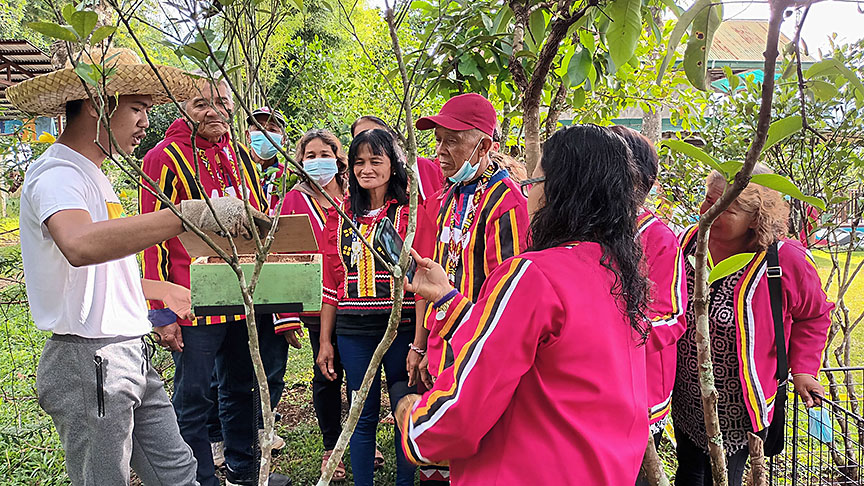
(IPRA is the Indigenous Peoples Rights Act or Republic Act 8371. The initial ICCs/IPs means Indigenous Cultural Communities/Indigenous Peoples.)Baleteon claimants drafted their ADSDPP in 2014 with guidance from the NCIP. In 2021, they asked KIN to assist them in enhancing the document, the same thing the NGO did with the ADSDPP of Daraghuyan.However, unlike Daraghuyan (4,203 hectares) where around 70 percent of their ancestral domain covers the natural park, hence the need for its inhabitants to include forest protection in their plan, Baleteon (466 hectares) is not deemed significant to biodiversity conservation. Nonetheless, in their ADSDPP the tribe allotted portions of the area to restoration, riverbank protection, and waste management activities.
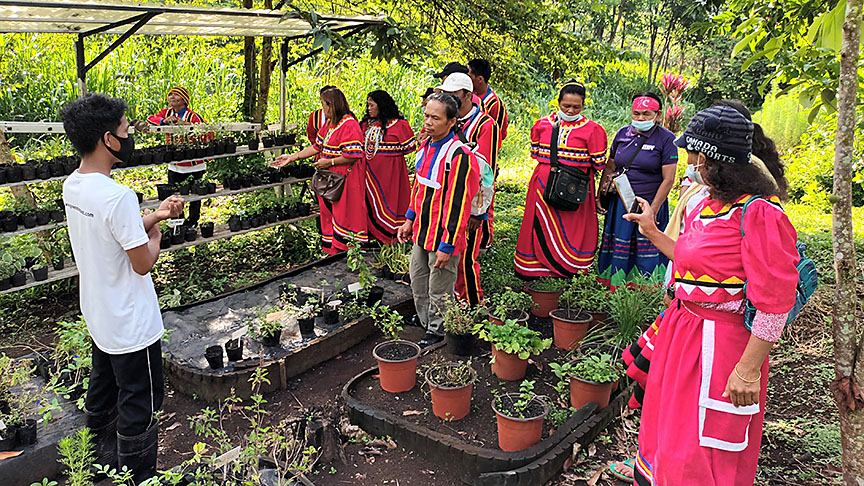
Size doesn’t matter
During their respective planning workshops held recently the Daraghuyan and Baleteon members learned experience-based ideas on how to maximize a small area for farming. Leonardo Gil Lumarda, owner of Umanika Eco-Cultural Farm in Malaybalay where the workshops were held, shared how he has managed to turn his 8,000-square meter farm into a profitable venture through crop diversification using organic methods, honey production using native bees, and processing his produce for more income
Mr. Lumarda, also known as Datu Makadingding, concluded his sharing with a challenge: “My farm is less than one hectare. You have hundreds of hectares of land, so there’s no reason for you not to prosper.”His staffers gave the participants a tour of the farm for them to get a concrete picture of how things are being done there.The lessons learned at Umanika as well as the previous consultations and workshops made both groups realize that their plans remain a work in progress. Like a piece of sculpted wood, their true form will gradually emerge with each strike of the anvil on the chisel.
(MindaViews is the opinion section of MindaNews. The writer facilitated the planning workshops of the Daraghuyan and Baleteon members. H. Marcos C. Mordeno can be reached at hmcmordeno@gmail.com.)

